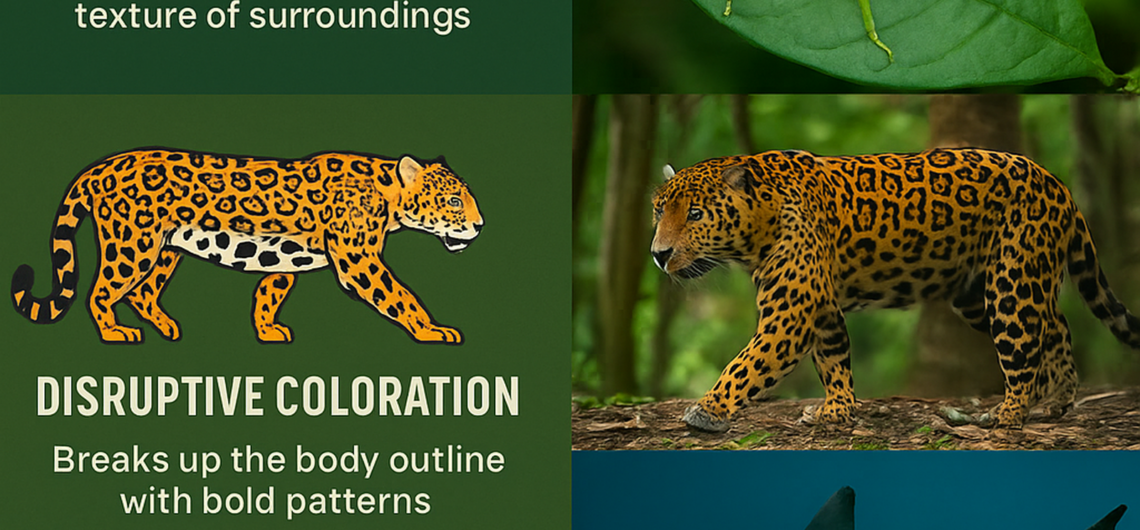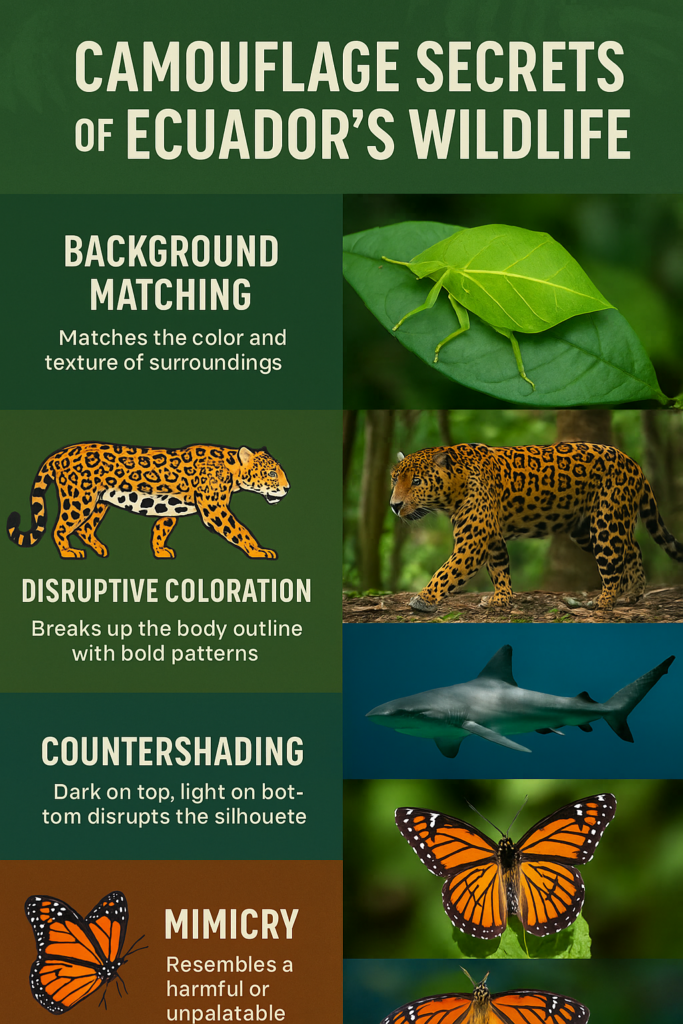Hidden in Plain Sight: Nature’s Camouflage Secrets and What They Teach Us
Discover Ecuador’s Masters of Disguise — and How Their Survival Skills Can Inspire Us
On a misty morning deep in the Ecuadorian Amazon, your guide stops abruptly. He points to a leaf — or what you think is a leaf — until it suddenly blinks. It’s a katydid, perfectly matching the foliage, invisible just moments before.
Nature has perfected the art of camouflage over millions of years. For animals, it’s a matter of survival: avoiding predators, catching prey, or even communicating in secret. For us, understanding these adaptations is more than fascinating science — it’s a lesson in awareness, adaptation, and respect for the natural world.
At Barefoot Expeditions, we believe travel is about learning from nature, not just looking at it. Here’s how some of Ecuador’s most incredible creatures use camouflage — and how those same strategies can inspire us.
12 Camouflage Techniques from the Animal Kingdom
| Technique | Ecuador Example | Why Animals Use It | Life Lesson for Us |
|---|---|---|---|
| Cripsis (Background Matching) | Leaf insects in Yasuní, flounders in Galápagos | Disappear into surroundings to avoid detection. | Observe quietly before acting — sometimes blending in is strategic. |
| Disruptive Coloration | Jaguars in the Amazon, tigrillos | Break body outline to confuse predators or prey. | Break predictable patterns to avoid being an easy target. |
| Seasonal Camouflage | Andean fox in highlands | Change coat color with snow/dry seasons. | Adapt to changing environments. |
| Batesian Mimicry | Harmless butterflies mimicking toxic species | Avoid attacks by appearing dangerous. | Borrow credibility or symbols of strength for protection. |
| Müllerian Mimicry | Bees and wasps | Share same warning patterns to reinforce danger message. | Collaborate to strengthen a shared cause. |
| Autodecoración | Crabs covering themselves with algae | Use local materials to disguise. | Use available resources creatively to adapt. |
| Countershading | Galápagos sharks, dolphins | Dark above, light below to vanish in open water. | Manage your image from all perspectives. |
| Active Camouflage | Octopus, cuttlefish off Ecuador’s coast | Change color and texture instantly. | Be versatile — rapid adaptation is a superpower. |
| Aggressive Mimicry | Anglerfish in Galápagos | Pretend to be harmless to lure prey. | Attract opportunities subtly before revealing intent. |
| Tactical Stillness | Owls, praying mantis | Remain frozen to avoid being noticed. | Patience can be your strongest advantage. |
| Size Illusion | Owls fluffing feathers, butterflies with eye spots | Appear larger or more threatening. | Amplify presence when needed to command respect. |
| Shadow Camouflage | River fish in Cuyabeno | Stay under shade to reduce visibility. | Choose environments that work in your favor. |
Why Nature’s Camouflage is Genius
-
Efficiency — Avoiding a fight saves more energy than winning one.
-
Adaptability — Survival belongs to the most adaptable, not the strongest.
-
Stealth Advantage — Many victories happen before the opponent even sees you.
Traveler’s Tips: Spotting Camouflaged Wildlife in Ecuador
-
Move slowly and quietly — sudden movements scare wildlife away.
-
Train your eyes — look for shapes and outlines, not just colors.
-
Listen carefully — sometimes sound reveals what the eyes can’t see.
-
Be patient — some of the best sightings happen when you least expect them.
See It for Yourself
In Ecuador’s jungles, highlands, and coasts, camouflage is everywhere — but only for those who know how to look. On a Barefoot Expedition, we’ll teach you to see the unseen: the frog disguised as moss, the owl that becomes a branch, the shark that melts into the ocean’s light.
Join us and discover the art of invisibility — not just in nature, but in life.





Comments